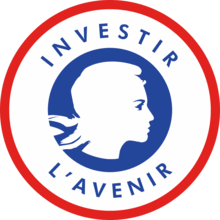Rural landscape dynamics and food accessibility in Burkina Faso
Goals
Linking village landscape dynamics over the past 15 years to people’s food accessibility and security, in a context of global changes (climatic, ecological, economic, and politic) and studying the relationship between the landscape biodiversity and the food and nutrition accessibility
Results
1. Assessing the landscape dynamics at the village territory level over the 15 past years for 10 villages with high-resolution images from Google Earth (or other if necessary): a. analyzing the present landscape structure i.e., its composition and arrangement, and the resulting spatial relationships between its individual elements, that are ecosystems in interactions (such as fields, fields with parklands, fallows, woodlands, pastures, water points, housing) and can be characterized by their size, shape, arrangement and distribution. A special emphasize will be put on the density and the diversity of the trees in the parklands that are key for nutrition, crossing images with field assessment; b. based on this more recent mapping, reconstructing the landscape trajectories using older and older images over 15 years and the first Google Earth images.
2. Linking these landscape trajectories with drivers of change (demographic transition and new need for local and urban food consumptions, field clearing and deforestation to increase and diversify the food production, international, regional and national market-oriented productions, land management policies and projects, etc.)
3. Linking these landscape dynamics to households adaptive strategies to their environmental and socio-economic context for insuring their food security directly (consumption) or indirectly (selling products from landscape for purchasing food)
4. Building a trajectory of co-evolution between the landscape dynamics and the food and nutrition security and assessing the more suitable landscape structure in order to ensure a resilient food and nutrition security for villagers and particularly for the most vulnerable people.
Expected outputs
1. 10 landscapes structure and biodiversity analysis for the 10 villages that will be surveyed by nutritionists and economists in the framework of the RELAX project
2. 10 landscape trajectories over the 15 last years for the 10 villages that will be surveyed by nutritionists and economists in the framework of the RELAX project
3. 10 histories of landscape dynamics connected with their drivers of change over the past 15 years
4. Links between people diet that will be surveyed in the framework of the RELAX project and their access to and use of landscape elements
5. Comparison between the landscape dynamics and the food and nutrition security for different households categories
6. Scientific valorisation
- Project Number1502-502
- Call for project
- Start date :1 May 2018
- Closing date :31 October 2018
-
Research units in the network


